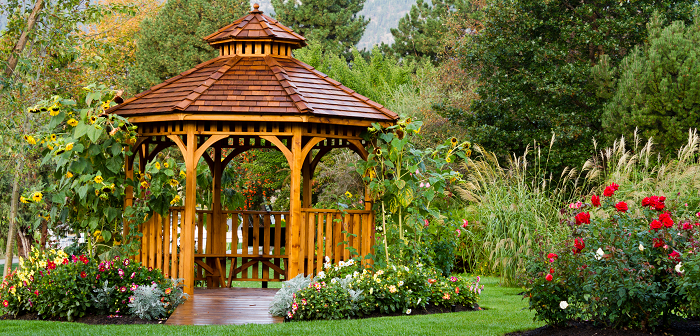Ever wondered why some gardens look lush and vibrant year-round? The secret might just be mulching. Mulching is a gardener’s best friend, offering numerous benefits for plant health and environmental sustainability. Whether you’re a seasoned gardener or a newbie with a green thumb, understanding how to mulch for different seasons can make all the difference, and as per Gardening Soils and Mulches Warrenton, VA, “Learn to know the plants and you’ll be able to see whether your plant is in its happy place.”
Why Mulching Matters
The Benefits of Mulching
Mulching isn’t just about making your garden look neat and tidy. It serves several practical purposes. First, it helps retain moisture in the soil, reducing the need for frequent watering. This is a big win for both your plants and your water bill. Second, mulch acts as a natural weed suppressant, saving you the hassle of constant weeding. Lastly, it provides essential nutrients to the soil as it breaks down, promoting healthier plant growth.
Environmental Impact
Mulching has environmental benefits too. By using organic materials, you help recycle garden waste and reduce landfill contributions. Plus, mulching can improve soil structure and fertility, fostering a healthier ecosystem in your backyard.
Mulching for Plant Health
Healthy plants are less susceptible to diseases and pests. Mulch creates a barrier that protects plant roots from extreme temperatures and maintains a consistent soil environment. This consistency is crucial for plant health, especially during seasonal changes.
Seasonal Mulching Guide
Spring Revitalization
Spring is all about rejuvenation. After the harsh conditions of winter, your garden needs a fresh start. Mulching in spring helps retain moisture as plants begin to grow and prevents the emergence of weeds.
Best Practices for Spring
- Moisture Retention:
- Spring rains can be unpredictable. A layer of mulch helps retain moisture in the soil, ensuring your plants have a steady water supply.
2. Weed Suppression:
- Spring is weed season. Mulch acts as a barrier, preventing weed seeds from germinating and taking over your garden.
3. Nutrient Boost:
- Use composted organic matter to give your plants a nutrient boost. This sets the stage for robust growth throughout the season.
Summer Protection
Summer brings heat, and your plants can suffer from heat stress. Mulching can help protect your garden and conserve water during these hotter months.
Techniques for Summer
- Heat Stress Reduction:
- Mulch insulates the soil, keeping it cool and reducing the risk of heat stress on plant roots.
2. Water Conservation:
- Mulched soil retains moisture longer, meaning you don’t have to water as frequently. This is especially useful during summer droughts.
3. Pest Control:
- Some mulches can deter pests. Cedar mulch, for example, has natural oils that repel insects.
Fall Preparation
Fall is the time to prepare your garden for the cold months ahead. Proper mulching can insulate your plants and prevent weed growth during the winter.
Preparing for Winter
- Insulation:
- A thick layer of mulch can insulate plant roots, protecting them from frost and extreme temperature fluctuations.
2. Weed Prevention:
- Apply mulch to prevent weed seeds from taking root. This makes spring gardening easier.
3. Nutrient Storage:
- Mulch breaks down over the winter, releasing nutrients into the soil and preparing it for the next growing season.
Winter Considerations
Winter mulching requires special care to protect your plants from harsh weather conditions. It’s all about insulation and maintaining soil stability.
Special Winter Tips
- Root Protection:
- Ensure a thick layer of mulch around the base of plants to protect roots from freezing temperatures.
2. Temperature Regulation:
- Mulch acts as a blanket, maintaining a stable soil temperature and preventing freeze-thaw cycles that can damage plant roots.
3. Erosion Prevention:
- Winter rains and snow can erode soil. Mulch helps keep soil in place, protecting your garden’s structure.
Eco-Friendly Mulching Options
Sustainable Materials
Eco-conscious gardeners can choose from a variety of sustainable mulching materials. Recycled organic matter, such as leaves, grass clippings, and compost, offers numerous benefits.
- Recycled Organic Matter:
- Using leaves, grass clippings, and compost not only recycles garden waste but also enriches the soil with nutrients.
2. Biodegradable Alternatives:
- Biodegradable mulches, such as straw and bark chips, break down over time, adding organic matter to the soil.
3. Eco-Friendly Benefits:
- Sustainable mulching reduces landfill waste and promotes a healthier garden ecosystem.
Mulch Depth and Application
Proper mulch application is crucial for its effectiveness. Applying the right depth and method ensures your garden reaps all the benefits.
Correct Mulch Depth
- Optimal Depth:
- Apply mulch to a depth of 2-4 inches. Too little won’t provide adequate protection, and too much can suffocate plant roots.
2. Even Distribution:
- Spread mulch evenly around plants, avoiding direct contact with stems and trunks to prevent rot.
3. Regular Maintenance:
- Check mulch levels periodically and replenish as needed to maintain optimal depth.
Common Mistakes to Avoid
Avoiding common mulching mistakes can save your garden from potential problems. Here are some pitfalls to watch out for.
Mulching Mistakes
- Over-Mulching:
- Piling mulch too high can suffocate plant roots and lead to rot. Stick to the recommended depth.
2. Mulch Volcanoes:
- Avoid creating “volcanoes” around tree trunks. This traps moisture and invites pests.
3. Ignoring Soil Health:
- While mulch is beneficial, it’s not a substitute for good soil health. Regularly test and amend your soil as needed.




